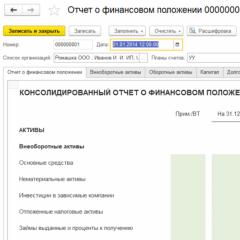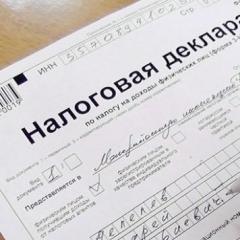“People are strongest for a tank.
Osvita
“The last German offensive began on the 15th-16th of leaf fall.
At the beginning of this attack on the main Volokolamsk-Nara direct line, on its left flank there were 25-27 divisions, of which approximately 18 tank and motorized ones.
Just before the hour of battle, their forces stumbled upon the boundaries.
And once the stinks had already reached the Kryukov canal, it became clear that the stinks had not been cleared.
The stinks went to their final demise.
They arrived, and the railway division is in reserve.
The most important transition was the counterattack of the 20th (Major General A. A. Vlasov) and 16th armies (Lieutenant General K. K. Rokossovsky).
As soon as the 9th century began to resist the 16th Army of the German troops in the incoming and outgoing directions.
The main battles on the right wing of the Western Front flared up near Klin.
Already before the evening of the 13th, the Klinsky grouping of the enemy was surrounded.
At the end of the 15th century, units of the 30th Army reached Klin.
After the end of the battles on the 16th of April 1941. The 30th Army was transferred to the warehouse of the Kalinin Front.
The Germans still hoped for victory.
In that period, it was rare for anyone in the army to say the phrase “Hitler is kaput.”
However, many of the full-fledged Germans, whom I had the opportunity to teach, strongly believed in their future victory and said that Hitler had not fooled them.”
The main result of the operation of the Red Army in 1941. The counterattack means eliminating the immediate threat to the capital of the USSR - Moscow.
Besides political significance, Moscow was the largest hub of all types of communications, the loss of which could negatively affect the conduct of military operations and industrial activities.
An important legacy of the Radyan counter-offensive was the timely reduction of the German command of effective instruments of war - motorized corps.
The battles from the very beginning developed a baked character.
8th century, the commander-in-chief of the German armored forces, Adolf Hitler, was hesitant to sign Directive No. 39 about the transition to defense along the entire Radian-German front.
The Red Army, regardless of the constant superiority in manpower, tanks and tanks, important natural minds, already in the first days of the counterattack broke through the defense of the German troops on the day before Kalinin and on the entering Moscow, cutting off the forest and the Kalinin-Moscow highway and releasing a number of populations points.
It is clear that the Radyan army gained victories by sacrificing their soldiers and technical capabilities to the enemy.
Special warehouse: Chervona Army - 1.1 million people, Wehrmacht - 1.7 million (spread ratio 1:1.5);
As a result of the Radian counterattack near Moscow, a most important development began - first, in the Second World War, the insurmountable Wehrmacht was defeated, and then it suffered defeats from the Red Army.
The German military was thrown 100-250 kilometers away from the capital of the Russian Empire, and the threat of the enemy burying the most important economic and transport center of the USSR and the Moscow industrial area was removed.
The success was obvious, and its significance went far beyond the days of the military administration.
During the hour of the battle for Moscow, the strength and morale of the German army was broken.
From this moment on, the strength of the German machine changed, and the strength of the Red Army gradually grew.
Of particular significance to this strategic success is the fact that the victory was achieved by transporting Germans in manpower, tanks and aircraft (the Red Army had superiority only in aviation).
The Radyansky command decided to compensate for the shortage of soldiers and the replacement of armored vehicles in the future by choosing the moment of choosing the offensive.
A German van Mercedes-Benz L3000 was smashed and abandoned upon entry.
Winter 1941 - 1942
Dzherelo: Sovereign Zelenograd Historical and Local History Museum.
The German cars left the area within an hour.
Winter 1941 - 1942
A German convoy was broken up near the village of Kryukov.
Winter 1941 - 1942
He raised the Radian skiers near the village of Kryukov near Moscow.
Winter 1941 - 1942
A group of German soldiers buried near the end of the battle for Moscow.
The car "Kübelwagen" (Volkswagen Tour 82 Kubelwagen) abandoned during the German invasion.
Winter 1941 - 1942
Radian soldiers are celebrating the defeat and abandonment of a German Pz.Kpfw.III tank.
Winter 1941 - 1942
Armored personnel carrier SdKfz 251/1 “Hanomag” abandoned during the German invasion.
Winter 1941 - 1942
Radyansky soldier with an abandoned German 105-mm light field howitzer leFH18.
Winter 1941 - 1942
Village children sit on top of a damaged and abandoned German Pz.Kpfw.III tank.
Winter 1941 -1942 born
Radyansky sapper on demining.
Winter 1941 - 1942
German soldiers surrender to the Red Army at the hour of the battle for Moscow.
Winter 1941 - 1942
Radyanskiy armored vehicles lead the winter of 1942.
The fighters are equipped with a single-shot anti-tank rifle designed by V.O.
Degtyarova PTRD-41.
Cavalry of the 2nd Guards Corps of Major General L.M.
The dovator passes through the village near Podmoskov.
The author's title of the photo is "Hanging a film to the enemy's front line for attack."
A 150-mm self-propelled armored vehicle siG 33 (sf) based on the Pz.I Ausf B tank (Bison self-propelled gun) was buried.
Western Front.
Radyansk repairmen look at an abandoned Pz.Kpfw tank.
III from the warehouse of the 10th tank division of the Wehrmacht.
The battles from the very beginning developed a baked character.
8th century, the commander-in-chief of the German armored forces, Adolf Hitler, was hesitant to sign Directive No. 39 about the transition to defense along the entire Radian-German front.
8th century, the commander-in-chief of the German armored forces, Adolf Hitler, was hesitant to sign Directive No. 39 about the transition to defense along the entire Radian-German front.

The Red Army, regardless of the constant superiority in manpower, tanks and tanks, important natural minds, already in the first days of the counterattack broke through the defense of the German troops on the day before Kalinin and on the entering Moscow, cutting off the forest and the Kalinin-Moscow highway and releasing a number of populations points.
It is clear that the Radyan army gained victories by sacrificing their soldiers and technical capabilities to the enemy.
Special warehouse: Chervona Army - 1.1 million people, Wehrmacht - 1.7 million (spread ratio 1:1.5);
The German military was thrown 100-250 kilometers away from the capital of the Russian Empire, and the threat of the enemy burying the most important economic and transport center of the USSR and the Moscow industrial area was removed.
During the battle for Moscow, the German army experienced great losses in special power and technology.
During the hour of the battle for Moscow, the strength and morale of the German army was broken.
From this moment on, the strength of the German machine changed, and the strength of the Red Army gradually grew.
Of particular significance to this strategic success is the fact that the victory was achieved by transporting Germans in manpower, tanks and aircraft (the Red Army had superiority only in aviation).
The Radyansky command decided to compensate for the shortage of soldiers and the replacement of armored vehicles in the future by choosing the moment of choosing the offensive.
Winter 1941 - 1942

So, from the beginning of 1941 to the end of 1942, nearly 650 thousand people were killed, wounded and others screaming in obscurity.

To put it into perspective, for the entire military campaign at Zakhodi in 1940, the Wehrmacht spent about 27 thousand. osib.

In an hour from the beginning of 1941 to the beginning of 1942, the German armies spent 2,340 tanks near Moscow, while the German industry could produce more than 1,890 tanks.


Aviation recognized the great expenses that could not be fully compensated for by industry.
A German convoy was broken up near the village of Kryukov.

A German van Mercedes-Benz L3000 was smashed and abandoned upon entry.

Winter 1941 – 1942

The German cars left the area within an hour.

Winter 1941 – 1942

The car "Kübelwagen" (Volkswagen Tour 82 Kubelwagen) abandoned during the German invasion.

A German convoy was broken up near the village of Kryukov.

Winter 1941 – 1942

He raised the Radian skiers near the village of Kryukov near Moscow.

Armored personnel carrier SdKfz 251/1 “Hanomag” abandoned during the German invasion.

Winter 1941 – 1942

The car "Kübelwagen" (Volkswagen Tour 82 Kubelwagen) abandoned during the German invasion.

Winter 1941 – 1942

Village children sit on top of a damaged and abandoned German Pz.Kpfw.III tank.

Winter 1941 -1942 born

Radyansky sapper on demining.

Radian soldiers are celebrating the defeat and abandonment of a German Pz.Kpfw.III tank.

German soldiers surrender to the Red Army at the hour of the battle for Moscow.

Radyanskiy armored vehicles lead the winter of 1942.

Winter 1941 – 1942

Armored personnel carrier SdKfz 251/1 “Hanomag” abandoned during the German invasion.

Cavalry of the 2nd Guards Corps of Major General L.M.

The dovator passes through the village near Podmoskov.

The author's title of the photo is "Hanging a film to the enemy's front line for attack."

A 150-mm self-propelled armored vehicle siG 33 (sf) based on the Pz.I Ausf B tank (Bison self-propelled gun) was buried.

Western Front.
Osvita
“The last German offensive began on the 15th-16th of leaf fall.
At the beginning of this attack on the main Volokolamsk-Nara direct line, on its left flank there were 25-27 divisions, of which approximately 18 tank and motorized ones.
Just before the hour of battle, their forces stumbled upon the boundaries.
And once the stinks had already reached the Kryukov canal, it became clear that the stinks had not been cleared.
The stinks went to their final demise.
They arrived, and the railway division is in reserve.
The most important transition was the counterattack of the 20th (Major General A. A. Vlasov) and 16th armies (Lieutenant General K. K. Rokossovsky).
As soon as the 9th century began to resist the 16th Army of the German troops in the incoming and outgoing directions.
The main battles on the right wing of the Western Front flared up near Klin.
Already before the evening of the 13th, the Klinsky grouping of the enemy was surrounded.
At the end of the 15th century, units of the 30th Army reached Klin.
After the end of the battles on the 16th of April 1941. The 30th Army was transferred to the warehouse of the Kalinin Front.
The Germans still hoped for victory.
In that period, it was rare for anyone in the army to say the phrase “Hitler is kaput.”
However, many of the full-fledged Germans, whom I had the opportunity to teach, strongly believed in their future victory and said that Hitler had not fooled them.”
The main result of the operation of the Red Army in 1941. The counterattack means eliminating the immediate threat to the capital of the USSR - Moscow.
5-6 breasts 1941 The counter-offensive began near Moscow.
From whose battle lay the military biography of the state, on the fields of the Moscow region food supply for the region and its people was observed.
...Until the end of the spring of 1941, the fascist army was advancing on all directions of the Radian-German front.
The task before her was to: with heavy tank groupings to drive away the main forces of the Zakhidny, Reserve and Bryansk fronts that would cover the capital, after which to attack Moscow from day to day with the help of infantry units.
The operation to bury Moscow was given the code name “Typhoon”.
Together with her, the German command concentrated 74.5 divisions (over a million troops), 1,700 tanks, over 14 thousand guns and mortars, 900 combat aircraft on the Moscow direct.
On the 14th, the enemy renewed the attack and reached Kalinin.
A war front loomed over Moscow, and the Headquarters of the Supreme High Command created a new Kalinin Front under the command of Colonel General I on the 17th. S. Koneva.
The 22nd, 29th, 30th and 31st armies have reached the warehouse front, which will act in this direction, as well as the 183rd, 185th and 246th rifle divisions, 46th and 54th. cavalry divisions.
, 46th motorcycle regiment and 8th tank brigade of the front line.
The front line was approaching Moscow.
DKO praised the decision to evacuate from the city the official establishments, the diplomatic corps, and the great defense factories.
The capital lost its DKO, the Headquarters of the Supreme High Command, and the party and military apparatus.
Until the end of the war, the enemy was closed by the incredible forces of the army and the burghers 20-30 kilometers from the capital.


